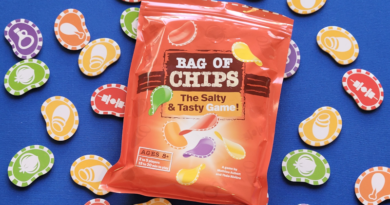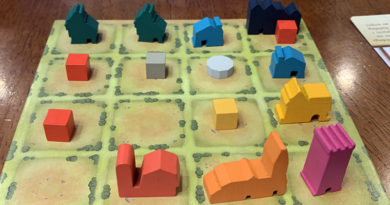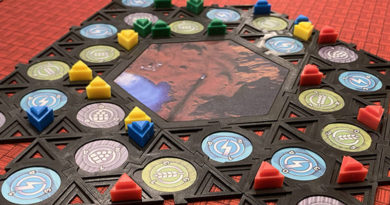Charterstone Board Game Review
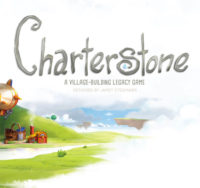
Would you love to build your own little village and watch it grow?
We’re not talking about SimCity here. Instead, we’re talking about Charterstone by Stonemaier Games.
Charterstone is a campaign, legacy game where players compete to win the graces of the Forever King by building a grand village over the course of 12 games.
Since it’s a legacy game, choices players make will permanently alter the game board — making future game options and experiences all unique!
The game was published at the end of 2017 and we finally got a copy and a chance to play this summer. And now we’re ready to share our thoughts about this unique game.
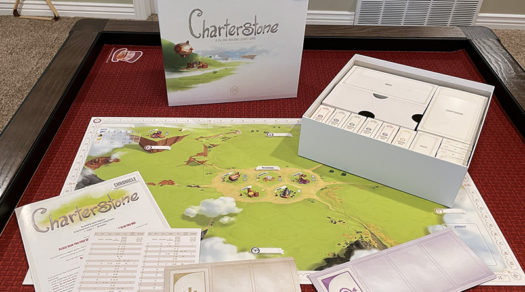
How to play Charterstone
Charterstone is a worker-placement game where players start with 2 “workers” that they’ll place on different spaces on the board to take actions specific to those spaces (like gaining resources, cards, or reputation in the village).
For example, a player may place one of their workers on the Treasury building to exchange 1 of their resources to receive 1 coin.
But we’re getting ahead of ourselves.
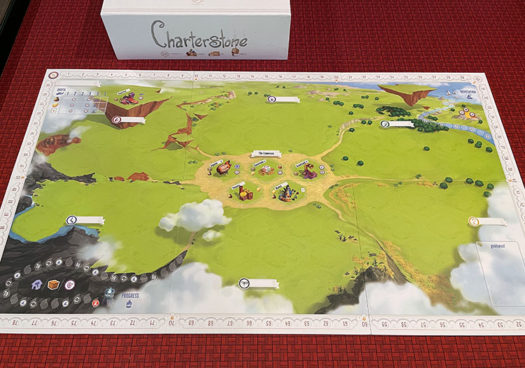
Unlike other games, when players open the game box, they should NOT open everything. Instead, players set out the blank game board, choose a player box, and take out the items in their box (workers, influence markers, a score marker, and a “persona”).
The rulebook has a few rules described in it, but is mostly blank with spaces to add more rules (via stickers) as the players progress in the game.
One of the containers in the game box has a ton of cards. One player removes only the first card which begins the story and describes what players are to do next. They’ll discover what to do with their persona and will get their first building card.
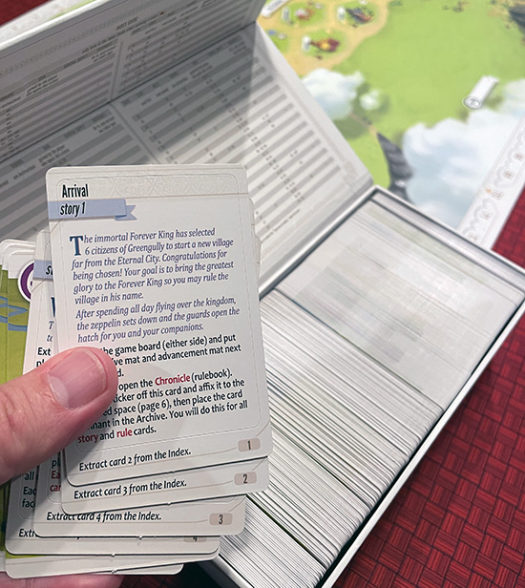
In this way, players together learn the rules of how to play little by little. Since this discovery is part of the fun of the game, we won’t go into detail about the next steps. Instead, just know that players will be pulling out new cards and using them to expand their options in the game.
For example, the first thing players are trying to do is build their first building in their “charter” area.
There are 6 large “charter” areas on the board and each player will construct buildings in their own charter area. Each of these areas is made up of 6 spaces for buildings. Over the course of the 12 games in a campaign, players will add buildings to those 6 spaces in their charter area.
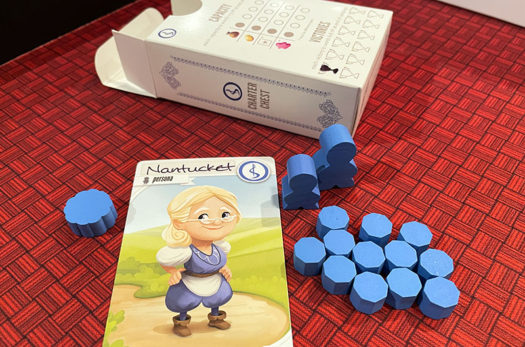
Player Turns
On a player’s turn, they may choose one thing to do. They either place one of their workers and take the action at that location or retrieve all their workers from the game board.
Players may place one of their workers on any location space on the board — whether it’s in their own charter or in another player’s charter area. They may also place their worker in a space that already has another worker. However, in doing so, the previous worker is removed and given back to the player that controls that worker.
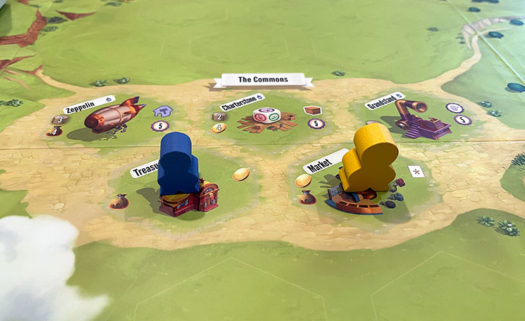
Two of the main drivers in the game are building new buildings and opening crates.
A player may construct a building by going to the Zeppelin space in the center of the board. They pay the required resources (listed on the building card) and then remove the sticker from their building card and stick it to the game board. Where they place it in their area is completely up to them. But since it’s a sticker, it will be there permanently for all future games.
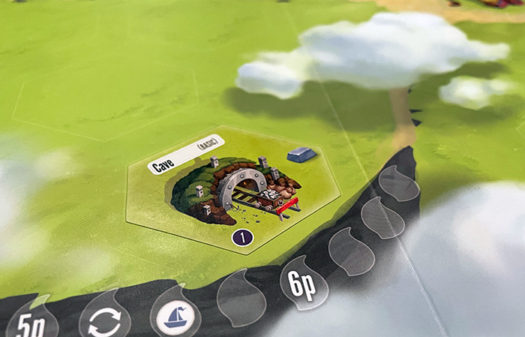
If the building card has a crate icon in the upper right corner, the player keeps the card. On a later turn, the player may choose to take an action to open the crate by going to the Charterstone location in the center of the board. When they do this, they’ll check the number on the crate with the reference sheet to see which cards they get to pull from the card container. These new cards will do various things, but one of the main elements is that they’ll bring new building cards into play.
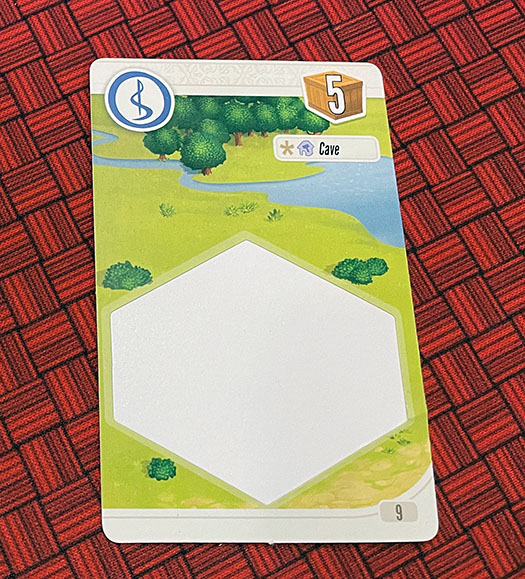
Players will also have opportunities to use their influence markers in a game. One of the areas they can place influence markers is on the Reputation track. At the end of each game, players will gain points based on majorities on that track.
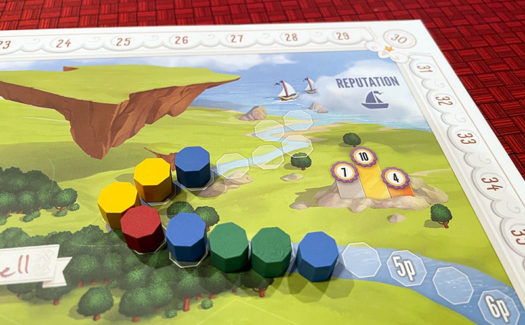
Game End
Players continue taking turns until the progress token reaches the last space on its track. Then players finish out the round and total up their points.
At that point, some of the cards players have drawn, as well as some of the new rules players have added to the rulebook, will explain what players do at the end of each game. This will also change from time to time.
Also, one of the main things players do at the end of each game is write on their charter boxes.
Where players choose to make their marks on their own boxes will also impact future games. For example, one side of the box is labeled “Capacity”. As players mark these spaces, it means they’ll be able to carry over more of that item from game to game. For example, they may be able to keep some of their resources they end one game with to start out the next game with.
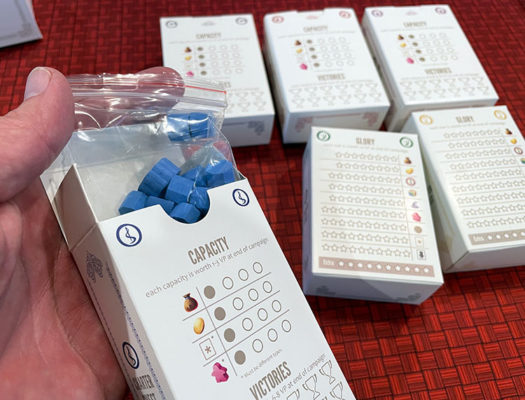
Players continue with the story, learn new rules, add more elements, write on the board and cards, and build out the village from game to game until they finish all 12 games in the campaign. (Hopefully not all in one setting.)
After playing the 12 games in the campaign, the final game state will be set (and completely personalized) and players will be able to continue playing the game forever after in that state.
Can the whole family enjoy Charterstone?
Over the years, we’ve reviewed a handful of campaign games and legacy games. And we’ve had a great time with most of those we’ve played. Campaign games are those that include an ongoing storyline from game to game. And legacy games are those that have players making permanent changes to the game that impact future plays of the game.
Often legacy games play out as campaign games because of the continuing nature of the story from game to game. Players permanently mark the board and cards so that the next game continues on with new elements — all stemming from choices the players make along the way.
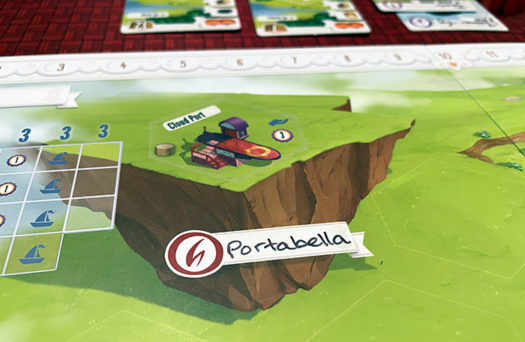
Because of that ongoing story nature, it’s recommended the same group of people play all the games in a campaign. With Charterstone, there are ways to add and drop players along the way. And players may choose to add in one or more “Automa” players (AI type players) in the games.
However, I went the route of getting a group of friends to commit to playing every Charterstone game together. The first night we chose to play we set out to play the first two games back to back. That way we’d get a nice flow going.
And sure enough, the flow was going so well and we’d had so much fun discovering new elements in each game that it was hard to stop. A couple of the players wanted to dive right into game 3 even though it was pretty late that night.
Needless to say, the fun keeps bumping up from there.
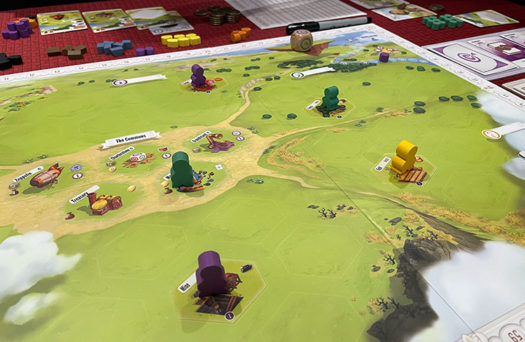
While the first couple of rounds felt a little long because there were many things to read and learn together, we liked that it felt like the start of many video games. In good adventure video games, players learn their skills (and controls) little by little. As they advance in the story, they pick up more skills and learn how to use them.
Charterstone feels like that — little bits of the rules are learned while playing. Just dive right in and start playing, then learn a little here and there.
We also really like that players can place their workers on any location, no matter the charter area.
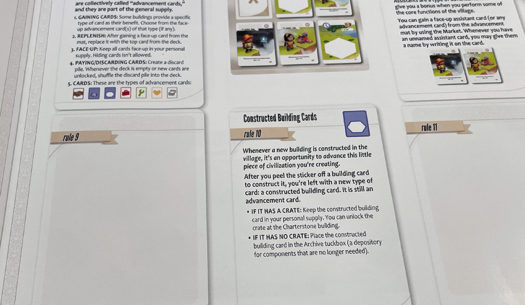
The downside to that is that after a few games, there are tons of places where you can place your workers. The options keep expanding. And as such, more thinking goes into each turn.
We like that on a player’s turn they either place a worker or remove their workers and then it’s on to the next player. However, as the amount of locations expand, the options notch up and thus it takes longer to think through where and when you want to place your workers.
But that’s what also makes the game so fun to play.
And we really love that our final version of Charterstone will be completely unique!
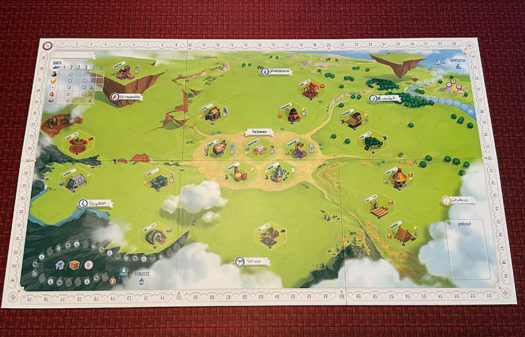
Plus, once we’re done with the campaign, we’ll be able to continue playing the game with our unique board and cards.
Because of the scaling nature of game play and the wide array of options that will be presented, we also agree with the recommended age being 14+. While the artwork is nice and cutesy, this isn’t a game most young kids will enjoy playing. But if you’ve got teens and adults, we’d definitely recommend it.
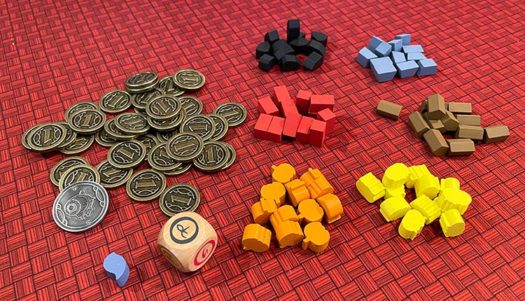
How does Charterstone score on our “Let’s Play Again” game meter?
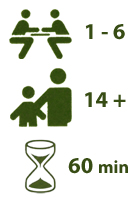 Charterstone scores high on our “let’s play again” game meter because of the engaging game play and legacy elements. Since each game builds on the ones prior, it naturally lends to wanting to play another game right after.
Charterstone scores high on our “let’s play again” game meter because of the engaging game play and legacy elements. Since each game builds on the ones prior, it naturally lends to wanting to play another game right after.
Each game last about an hour, so it’s not very practical to rattle through too many games at once. But since we chose to play with the same group, it does give us an excuse to get the gang together more frequently so we can keep advancing through the campaign.
And even though the campaign “only” lasts for 12 games, how many games on your game shelves have you played more than 12 times?
For those that may be disappointed in just 12 games, the game board is actually double-sided and you can buy a “Recharge Pack” that will get you a new set of cards so you can play through a campaign a second time using the other side of the board. So then after that, you’ll have 2 different, unique versions that you could choose between playing on for future games.
Charterstone packs a punch with the campaign and legacy elements. But it’s also a fun worker placement game in its own right, so even after the campaign ends we’ll keep on playing.
We’d like to thank Stonemaier Games for a review copy of Charterstone.



